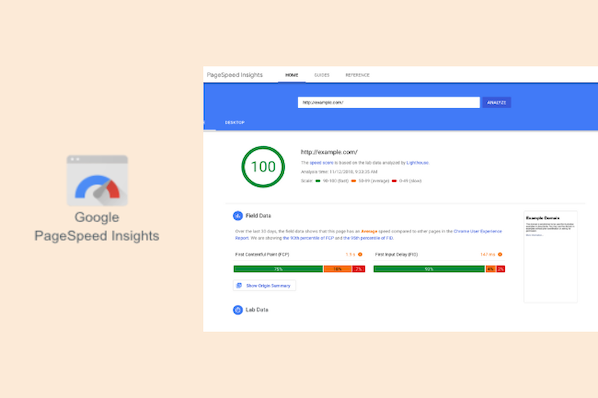Google handles over 1.2 trillion searches every year — and this number is only going up. Website optimization can help you boost the visibility of your existing content.

Why web optimization? To capture customer interest and drive conversions, it needs to be easy for users to find and use your site. If they can’t, it doesn’t matter how much time and effort you’ve spent creating great content.
In this beginner’s guide, we’ll break down the basics of web optimization, tackle key techniques to improve your website, and highlight some of the best tools available to get your site front and center on SERPs.
What is website optimization?
Website optimization is a set of actions that can help you improve user experience, traffic, and conversions on your site.
SEO solution providers and industry experts have different ideas about exactly what makes web optimization efforts successful. Many focus on using targeted keywords to boost your ranking for specific search terms. And while this is both useful and potentially profitable, it’s not enough on its own.
Why is website optimization important?
Every business loves its website when it first launches. But over time traffic and conversions might start sinking. Users might start posting reviews and sending messages about a frustrating experience.
Your website has the power to increase traffic, leads, and conversions for your brand. You can create personalized experiences that help your customers convert faster.
Your website can also:
- Generate higher ROI for your ad spend
- Improve brand awareness
- Build trust with your target audience.
All you need is a little website optimization.
Website Optimization Strategies
The best way to start any website optimization effort is with a complete audit of site performance and pain points. Tools like Google’s PageSpeed Insights can locate loading and usability issues. Basic keyword research can help determine which terms your target market customers are searching for — and how your site stacks up.
For example, if you run a lawn care business in Detroit, you’ll want a high search ranking for terms like “lawn care Detroit” and “Detroit lawn service.” If searching for those terms doesn’t return your site as a top result, you’ve got work to do.
There’s no single, standardized solution to optimize your website. But there are common techniques for a few primary areas of focus. Let's take a look at them below.

Website Optimization for User Experience
1. Pinpoint your market.
Before you can optimize your website, you need to define your target audience. Start by finding your ideal customer:
- What products or services are they looking for?
- How much are they willing to spend?
- What are their priorities when it comes to contacts, contracts, and communications?
Tools like Google Analytics and Facebook Insights can help you learn critical information about your users and create accurate and detailed reader personas.
A better user experience means increased satisfaction — and can also impact your search ranking. Improving UX requires you to first understand what your user's challenges, expectations, and goals are. You can gain these insights through interviews, surveys, and user testing.
2. Think about user intent throughout the buyer journey.
Once you're clear on who you want visiting your website, it's time to outline their journey. If your content doesn't match the needs of your audience, you won't get the traffic you're looking for. But if you understand what your customers need as they move from awareness to decision, you can create a more powerful on-site experience.
Outline what customers are looking for at each stage in the process, and find the content and keywords that best fit each step.
Mapping your buyer journey helps your visitors find what they need on your website. This can improve your site's health and the health of your business too.

3. Improve UX with A/B and multivariate testing.
It can be tempting to jump in and start making changes after a quick meeting or conversation. But the best UX strategies start with data. Multivariate and A/B testing are great ways to create a better experience for the people who use your website.
A/B testing is useful when you're launching something new or if you already have a large audience. A/B tests compare two different elements on your website to see which performs better.
Multivariate testing is useful for making more complex changes. Websites often have many different elements, and this type of testing can help you see how it all works together.
For example, say you want to change the below options on your home page:
- Top navigation menu
- Video or still image on your home page
- Footer menu
A multivariate test can help you figure out which combination works best for your users. This makes them a great option for small changes over time.
4. Create a seamless mobile experience.
Optimize your website for all devices, not just desktops. This is especially true of mobile devices since mobile accounts for more than half of web traffic worldwide. Besides improving load times, optimizing your website for the mobile experience may require you to:
- Condense your menus
- Remove popups or interstitials
- Make the search box or icon easy to find
- Offer filters and sorting options
- Place CTAs above the fold
Check this post out for step-by-step instructions on website optimization for mobile devices.
SEO Website Optimization
1. Find your target keywords.
Select keywords aligned with your target market and use them to return search engine results. As you research keywords, don’t forget about user intent.
Improved, AI-driven analysis now helps companies like Google extrapolate user intent based on their search inquiry and display contextually relevant results. This makes it essential for site owners and operators to think like users rather than marketers when creating and optimizing content.
The best way to account for user intent? Enter your keyword into a search engine and evaluate the results that come up. Then, make sure your content aligns with the intent of these top search results, which Google has deemed relevant.
If your site isn’t on the first page, it’s also a good idea to check out your top competitors. They'll give you key data to help optimize your own content.
To learn more about this step, check out this post on how to do keyword research for SEO.
2. Build better backlinks.
Backlinks from other highly-ranked sites can help organically improve your standing in search results. Best bet? Create and submit relevant, market-focused content to industry news or knowledge sites.
It’s also a good idea to regularly search for your company or brand name to find any missing attributions. Once you find them, you can ask other site managers to add a backlink.

3. Optimize your on-page content.
Great content relies on relevance. Any blog post, video, podcast, or digital resource you create should focus on your target market.
But it’s also critical to optimize your content for search engines. On-page optimization is a great way to improve rankings and traffic for your website.
There are many ways to optimize your on-page content for search, including:
- Adding keyword-based page titles
- Integrating relevant keywords
- Adding useful images
- Adding internal and external links
This guide to on-page SEO covers the topic if you're new to on-page optimization.

4. Speed up your website.
Website speed is a critical component of the user experience — on any device.
Google began incorporating mobile page speed in 2018 as a factor in search rankings, making improved performance a factor in favorable results.
There are dozens of ways to improve website speed, including:
- Using a CDN
- Reducing redirects
- Limiting HTTP requests
5. Revisit Old Content.
Revisiting old content is an essential part of SEO optimization that many overlook. As your website grows, it's natural to have some posts that underperform or become outdated over time. Regularly analyzing and updating this content can significantly improve your website's overall SEO.
As you embark on the task of revisiting your outdated content, consider the following important points:
- Analyze where traffic drops are happening and republish old content
- Find opportunities to improve ranking on content that never previously ranked
- Evaluate competitors and find out where they're surpassing you in quality

Website Optimization for Conversions
1. Review current user behavior.
Your return customers are often your most valuable. And your website has a major impact on whether your customers come back. 42% of people will leave a website because of poor functionality.
But website optimization can make a difference. Recent research from Google says that even a slight decrease in the time it takes to load your site on mobile can improve conversion rates.
You can improve the experience for your website users by tracking the actions they take on your site. Be sure to make time to review:
- Pages and links that return customers click on
- How users scroll down a page
- Where users drop off or bounce from your website
You can use tools like Google Analytics and Search Console to track clicks, scrolling, and session recordings. Again, small changes can have a big impact, so this is a great place to start if you're looking into website optimization for conversions.
2. Measure and monitor.
Effective optimization means ongoing measurement and monitoring to secure long-term ROI.
Conversion rate is the percentage of your website visitors who converted. It's up to your business which conversions it measures. You might want to limit conversion tracking to leads and sales.
Other conversions you can track include:
- Trial signups
- Email subscriptions
- Button clicks
- Account creation
Once you set up these conversions and their goals, you can calculate your conversion by using the simple formula below:

Number of conversions / Number of website visitors = Conversion rate
This number can simplify goal setting. It can also help you measure your website performance. Regular evaluation of website optimization efforts helps keep your conversion strategy on track.
Image Optimization for the Web
1. Compress your images.
The goal of any image optimization strategy is to improve website performance. And the single best way to do that is by compressing images on your site.
Compressing your images is a crucial component of any broader web optimization strategy. It's also important to maintain image quality as much as possible.
It's not worth the hours you're optimizing if you don't update your images. If your image file sizes are too large, they'll slow down your site's load time — and visitors won't wait around for them to load before bouncing. If your images aren't high-quality, they can erode trust in your brand.
To learn more about compressing images, check out our post on image compression.
2. Think about using a CDN.
A CDN is a content delivery network. This post gives a comprehensive overview of what a CDN is and how it works.
What's important to know as you optimize your website is that a CDN can improve your user experience. Several HubSpot plans include a free built-in CDN.
CDNs can speed up load times for web and mobile site visitors. They can also make your website more reliable, even during traffic spikes.
3. Optimize your image attributes.
This process can help you get product and brand images to rank along with your written content.
Start by giving your images file names that succinctly describe what they display. Then, do the same for your image alt text.
When in doubt, err on the side of plain language and straightforward descriptions. Superfluous image details can result in penalties to your ranking.

4. Add images where they're needed.
Adding images to pages where search engines find them helpful for readers is another way to provide a better website experience for your reader. To see what pages could benefit from the addition of images, use a keyword tool like Ahrefs to find keywords your site is ranking for that have image packs and thumbnails. If you don't have access to a tool like this, you can use a combination of Google Search Console (free) to source the keywords you're ranking for and your incognito browser to search for them and see if image packs or thumbnails appear. If they do, add images that can compete with the ones already on the SERP. Your page will be better positioned to win traffic from both your webpage URL and the image URL.

More Tips for Website Optimization
1. Back up your site before making changes.
Your business may already be in the habit of backing up your website daily, or even hourly. There are many reasons you should update your site consistently, including:
- Security incidents
- Hard drive or hosting issue
- Plugin errors
- Accidental deletion
When it comes to optimizing your website, it's important to back up your site before making changes. This is because it makes it easier to restore your site if your changes aren't working the way you hoped.
You will have more confidence making changes to your site if you know that you have a quick way to reset if your optimization isn't right.
2. Test and document changes as you update your website.
Besides the A/B and multivariate tests mentioned above, you'll want to run tests as you make changes to optimize your website.
This can be as simple as running through the same process your users do. You want to make sure that your changes are appearing and functioning the way you like.
It's also a good idea to watch your website analytics. Checking your analytics after changes can help you make sure that your updates didn't break or alter anything on your site.
As you make changes, it's also a good idea to document the details of each update as you make it. If your traffic or conversions drop over time, these details can help you focus on specific changes that could have caused the shift.

Website Optimization Tools
While the right techniques can help boost the impact of your site’s content and marketing campaigns, the right tools can help streamline the process and give your team more time to focus on what matters — building your brand.
With hundreds of tools now available, both free and paid, we’ve compiled a list of useful options to help your site maximize optimization efforts.
.png?width=650&height=433&name=My%20Featured%20Image%20Template%20Backgrounds%20(2).png)
Optimization Tools for Conversion
1. Content Hub
Best for: Conversion rate optimization

Why we like this website optimization tool: HubSpot's Content Hub is a feature-rich solution with optimization tools for marketers, developers, and IT teams alike. These tools include built-in SEO recommendations, adaptive testing, and contact attribution reporting.
Optimized web pages can be easily created, managed, and personalized for different visitors and modified to suit specific device types or conversion objectives.
2. Hotjar
Best for: Tracking user conversion behavior

Why we like this website optimization tool: Trying to figure out which CTA is more effective? Wondering why users aren't completing forms? Hotjar uses heatmaps, session recordings, and more to track user behavior on your site. These features can help you better understand how your customers and prospects are engaging with your website.
More resources for website conversion:
- Free Conversion Rate Optimization Resources
- Conversion Rate Optimization Guide
- More Conversion Rate Optimization Tools
- How to Increase Your Conversion Rate
- Conversion Strategy Lesson
Website Optimization Tools for User Experience
3. Google Analytics
Best for: Audience and content analysis

Why we like this website optimization tool: If you want to know how your site is performing across the world’s biggest search network, start with Google Analytics.
This free tool gives both critical site metrics and actionable data about user behavior at scale to help better tailor online content and campaigns and rank higher in search results.
4. Lucky Orange
Best for: UX research

Why we like this website optimization tool: To optimize your content, you need to have a deep understanding of your website visitors. Lucky Orange offers several ways to learn about your audience, including:
- Dynamic heatmaps
- Session recordings
- Live chat
- Conversion funnels
- Form analytics
- Surveys
This will help you make sure your optimization efforts align with your data.
5. User Interviews
Best for: Collecting user feedback

Why we like this website optimization tool: While quantitative data is valuable for any data-driven strategy, you don't want to rely on it alone. Anecdotes from customers can improve your website optimization.
User Interviews makes it simple to collect qualitative data from a large pool of qualified users. This audience can help you quickly answer your most urgent UX questions.
Many companies conduct this kind of research independently. But this tool streamlines the process and makes it more cost-effective for smaller businesses.
6. Lucidchart
Best for: Website design and workflow

Why we like this website optimization tool: Updating the user experience is a team effort. Miscommunication can slow down the process, and have a negative impact on your customers.
This tool simplifies the collaborative process of updating and optimizing your website. Lucidchart makes it easy to put research, user insights, and workflows into a single collaborative space. It also includes wireframes, diagrams, and mockup templates to use while planning.
More user experience resources:
Website Tools for Search Engine Optimization
7. SEO Marketing Software
Best for: All-in-one tracking and SEO

Why we like this website optimization tool: HubSpot can streamline your SEO by pulling your team, tools, and data together into a single platform.
With this tool, you can use the SEO recommendations as you create web pages. It also makes SEO easier by helping you:
- Analyze SEO metrics for your site topics
- Help you find the best keywords for your site
- Optimize content for your keywords
- Track competitor SEO performance
- Check backlinks
8. Moz Local Listing Score
Best for: Local SEO

Why we like this website optimization tool: Moz uses multiple data sources to see how your local business listings are performing across the web.
Designed for companies with brick-and-mortar storefronts, Moz shows how your listings compare and offers suggestions to help correct inaccurate data or supply more detailed, SEO-friendly information.
Basic Moz checks are free, while more in-depth results come with a monthly fee.
9. Ahrefs Backlink Checker
Best for: Backlinks

Why we like this website optimization tool: As noted above, great backlinks can help boost your site’s ranking in search engines and drive referral traffic.
Ahrefs Backlink Checker lets you see the top 100 backlinks to your site to help improve linking strategy and drive better search results. The trial version of this tool is free, while the premium option comes with a monthly cost.
Worth noting: You can also use this backlink checker to evaluate competitor sites and capitalize on gaps in keyword strategies.
10. Google Keyword Planner
Best for: Keyword research

Why we like this website optimization tool: Google makes the list again with their keyword planner.
This tool not only identifies the search volume of specific terms but also suggests potentially relevant keywords. These are often keywords that reflect user intent and may not be on your marketing radar. This can help open new avenues to boost your site’s overall relevance and ranking.
11. Yoast SEO
Best for: Readability and SEO

Why we like this website optimization tool: Yoast SEO can help you improve your website's on-page SEO. It not only analyzes the readability of your text — it also analyzes its SEO. That means you'll get suggestions for:
- Improving grammar, sentence structure, and reading level
- Keywords
- Optimizing meta descriptions and URLs
- Internal links
While some platforms like Content Hub will include these SEO recommendations automatically as you write, other platforms like WordPress, Magento, Drupal, TYPO3, and Neos CMS don't.
So you can download and install Yoast SEO to help simplify the on-page optimization process.
12. SEMrush SEO Content Template
Best for: Competitor analysis

Why we like this website optimization tool: SEMrush can help you optimize your content before you start writing. With this tool, you can search keywords you want to target and see the top 10 competitors who are ranking for those keywords in Google.
Based on the current SERPs, SEMrush will offer actionable recommendations for how to write your own keyword-driven content. The following are just a few items these recommendations will mention:
- Semantically related keywords
- Readability
- Word count
- Video usage
- Page title
More search engine optimization resources:
Tools to Improve Site Speed
13. PageSpeed Insights
Best for: Speed optimization

Why we like this website optimization tool: PageSpeed Insights offers an easy way to figure out the speed of your web pages on both mobile and desktop devices. It also offers suggestions to figure out what might be slowing down your site.
This tool includes data from the Chrome User Experience Report. It's also easy and free to use.
Just copy and paste the URL of the page you want to check into the tool. Click "Analyze" and a report will appear showing you what your users experience when they click on your site. It also includes a list of opportunities for you to improve page speed.
14. GTmetrix
Best for: Speed optimization

Why we like this website optimization tool: We know that Google added page speed as a ranking factor for mobile searches in 2018 — and that it had been a ranking factor for desktop searches since 2010.
If you didn't want to spend resources on Magento speed optimization services, using a speed optimization tool like GTmetrix can help you understand how your site’s page speed impacts your rankings on both desktop and mobile.
With this tool, you can generate reports that break down your page performance, track your performance over time, set up alerts that notify you when a page underperforms, and more.
15. Screaming Frog
Best for: Overall site performance

Why we like this website optimization tool: Screaming Frog is an advanced site audit tool. You can use it to crawl your website the way search engines do. This is much quicker than manually checking your website performance.
Each search engine is different, but this tool can help you:
- Find and repair broken links
- Analyze page titles
- Find duplicate content
- Check page indexing
16. EWWW Image Optimizer
Best for: Image optimization

Why we like this website optimization tool: Compressing images without losing quality is an essential web optimization technique. But compressing images manually can require a huge investment of time. A tool like EWWW Image Optimizer automates part of the process.
EWWW Image Optimizer has a CDN that automatically compresses and converts images as they are viewed. It allows for unlimited file sizes and can handle PNG, GIF, and WebP files.
More resources for website speed:
- Website Performance Guide
- Website Speed Strategies
- Website Performance Improvement Lesson
- How to Test Your Website Speed
Start Optimizing
Want to boost conversions and generate better ROI? Make sure your site gets noticed with targeted website optimization.
Start with an evaluation of current site performance, then implement key strategies to capture the attention of popular search engine spiders. Finally, deploy the right tools at the right time to automate key processes and discover new optimization opportunities.
Once your website reaches its full potential, you can focus on other strategies that can help you grow better.
Editor's note: This post was originally published in November 2020 and has been updated for comprehensiveness.







![The HubSpot Blog’s 2023 Web Traffic & Analytics Report [New Data]](https://www.hubspot.com/hubfs/Web%20Analytics%20Traffic.png)



